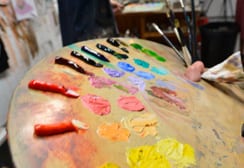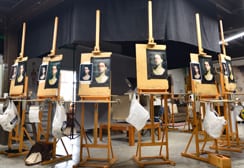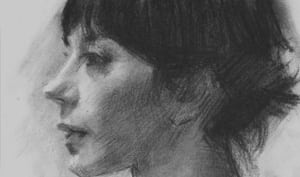Step 5: Eyes, Nose, Mouth, and Ear Shapes – Portrait of Lisa
Eyes, nose, mouth and ear shapes. With the big form modeling in place, it’s time to define the facial features by establishing their general color and tone before breaking them down into smaller planes.
1. Establish the Base Color and Tone for Each Feature
• Mouth: Start with the highest chroma (most intense) note, typically a red hue. The upper lip is usually darker and cooler than the lower lip, which catches more light.
• Nose: Has a lower chroma red hue compared to the mouth. The tip may have more warmth, while the bridge is often cooler and lighter.
• Eyes: Often contain purple or blue hues, especially in the shadows of the eye sockets. Avoid using pure white for the sclera (white of the eye); instead, use a soft grey, blue, or warm neutral to keep it natural.
• Ears: Can have a mix of red and orange hues, as they are thin and affected by blood flow. The shadows in the ear tend to be warm and soft.
2. Keep Shapes Simple Before Refining
• Block in the general shape and tone of each feature.
• Avoid too much detail too soon—focus on large color relationships first.
• Break each feature into smaller planes later to refine form and structure.
By approaching the features in this way, you create natural color harmony while maintaining strong form and structure.






